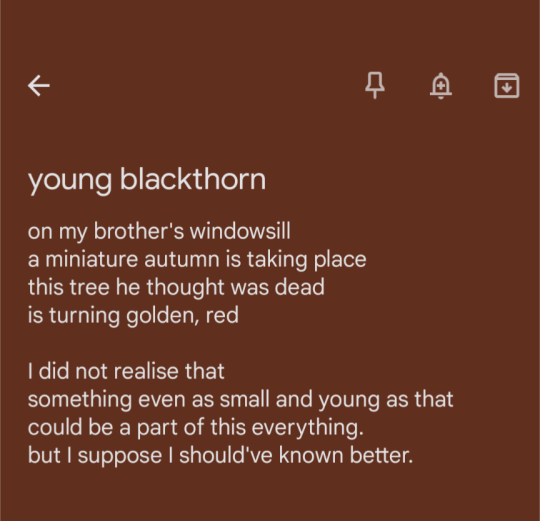#poems about trees
Photo

‘The Great Forest’ Poem
Written by The Silicon Tribesman. All Rights Reserved, 2022. Repost only with credits.
#poem#poetry#poetic#poetrycommunity#poets on tumblr#poems about nature#poems about trees#trees#ancient forest#poems about forests#nature#natural#ancient cultures#ancient living#landscape#wild places#trees and forests#poems about time
47 notes
·
View notes
Text


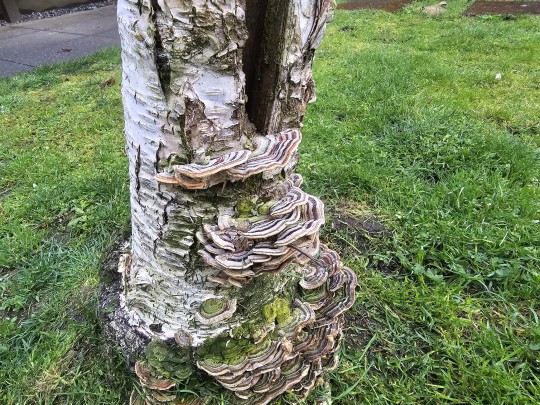


Fungus growing freely
Beautiful and purposeful
Multitudes of colors
Each ring represents a stage of
growth
Birch tree,
You'll be known forever
Deep inside in your trunk
the tree rot is healing
We can return to the earth
and the stardust in our bones will
plant seeds
Our yield is unlimited
as we harvest
We can be generous and bountiful
#personal#poetry#spilled ink#writing#body dysphoria#poems about trees#poems about life#queer poetry#writings#poems and poetry#love poems#spilled writing#writing love letters on the bark of birch wood trees#poems about nature#remember#writing about life#fungus#farming
1 note
·
View note
Text
Evening Poetry, November 20
This post contains Amazon affiliate links. If you click through and make a purchase, I will receive a small compensation at no extra cost to you. This helps keep my blog ad-free.
The Trees
by Mary Oliver
Do you think of them as decoration?
Think again.
Here are the maples, flashing.
And here are the oaks, holding on all winter
to their dry leaves.
And here are the pines, that will never…

View On WordPress
#Books#Evening Poetry#Mary Oliver#Mary Oliver Poems#Nature Poem#poems#Poems About Trees#Poetry#Tree Poems
0 notes
Text
The shadows have their seasons, too.
The feathery web the budding maples
cast down upon the sullen lawn
bears but a faint relation to
high summer's umbrageous weight […]


And loveliest, because least looked-for,
gray on gray, the stripes
the pearl-white winter sun
hung low beneath the leafless wood
draws out from trunk to trunk across the road
like a stairway that does not rise.
John Updike, “Penumbrae”
1K notes
·
View notes
Text



“Do not stand at my grave and weep
I am not there. I do not sleep.
I am a thousand winds that blow.
I am the diamond glints on snow.
I am the sunlight on ripened grain.
I am the gentle autumn rain.
When you awaken in the morning's hush
I am the swift uplifting rush
Of quiet birds in circled flight.
I am the soft stars that shine at night.
Do not stand at my grave and cry;
I am not there. I did not die.”
-Mary Elizabeth Frye
#reworked the original words for the art#love this poem so much#if you don’t want to cry then don’t think about little Annabeth trekking up to Thalia’s tree and reading to her and picking her flowers#percy jackson fanart#percy jackson#pjo fanart#pjo series#pjo tv show#thalia grace#annabeth chase#my art#digital art#made with procreate
259 notes
·
View notes
Text
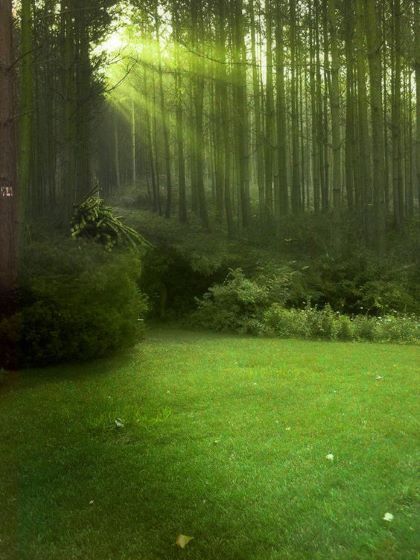
The Forest
The forest is the town of trees
Where they live quite at their ease,
With their neighbors at their side
Just as we in cities wide.
By Annette Wynne
197 notes
·
View notes
Text
a lot of people will think that in a hundred years, all memory and talk of them will be forever erased
but then we write on desks, carve our names into trees, write our heights on doorframes, document our lives in paper, leave little imprints of who we are into our world
and so no
you will not be forgotten forever, because we still find little glimpses of their lives too
a pot buried in what was someone's backyard, handprints far up but oh so little that they could have only reached with help from their family, stone carved into to tell stories of life and myth, bones that show that they were loved because there are fractures that have healed
you will not be forgotten
#thinking about humans and trees now#because for so long we have recorded our life in them#in so many different ways#desks with writing and trees with initials and paper with ink#wow#poetry#spilled thoughts#my thoughts#spilled ink#poem#ninety fifth post
60 notes
·
View notes
Text
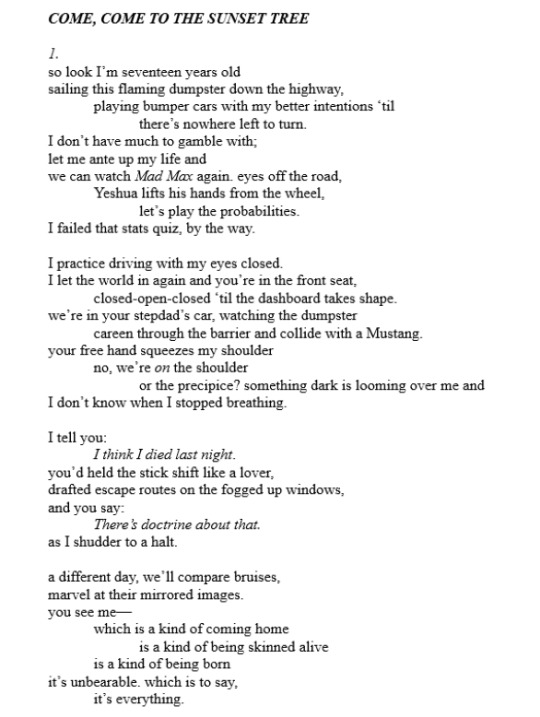


NAPOWRIMO24 #2: Come, Come to the Sunset Tree
(dedicated to the album The Sunset Tree by The Mountain Goats.)
#prompt: write a platonic love poem about either a person or an object. shld be written directly to the subject + include 3 memories w/ them.#this is a love poem to the album the sunset tree by the mountain goats lmao. thx for keeping me alive thru my teens ur a real one for that.#napowrimo#napowrimo 2024#poetry#poems on tumblr#poets on tumblr#poetry on tumblr#spilled ink#writeblr#survival poetry#dare i tag tmg? i think not. last thing i need is for tmg fans to compare my lyrical prowess to jd's. don't worry i know it isn't close#damien.txt#image description in alt
34 notes
·
View notes
Text
Whilst Alone In The Field
older and wiser,
strong in your stillness; and yet
grace, bend to the breeze.
all that you have seen,
tell me — you are a student.
you are life giver.
teach me to be still.
how to expect nothing, and
embrace everything.
#this is about a tree#literature#thoughts#nature#art#original poem#poems and poetry#poets on tumblr#writers on tumblr#trees#writing#writeblr#original post#poetic#poem#poems on tumblr#life quotes#beautiful quote#quotes#poetry
21 notes
·
View notes
Text
I like when Monk talks about Trudy. He is truly in love with this woman and his expressions of love are for the small details he noticed about her all throughout their time together.
#the poem tree was sweet#playing pusic for her at her grave with his clarinet#and that one time he did it with Willie Nelson because she loved his music#so he loved it too#milehigh#mile high#monk usa#monk#tony shalhoub#adrian monk#sharona fleming#BREAD AND BUTTER#the poems that Trudy wrote in high school were about Monk and he reads them every night#its just the little things#the tiny details he loved about her#willow watches Monk
23 notes
·
View notes
Text
so here’s the thing. two truths: everything in the world is poetry and everything in the world is energy. there are two kinds of energy. potential and kinetic. written poetry is kinetic, energy put in motion, always going forward. active, activated, actionable. everything else becomes potential energy, potential poetry. always waiting to be made into art. making it art in and of itself.
#DOES ANYONE UNDERSTAND ME. does anyone understand#everything ever in the world is a poem but there’s a difference between the poem your kitchen is#and a poem you write about your kitchen#continuing this thought. if a tree falls when no one is around does it make a sound#if something exists and no one is around. is it still poetry.#or does it become poetry when we see/hear/sense it. because of the meaning we attach to it#anyways. sorry for being insane about poetry in my defense it is all consuming. to me. once you start seeing the world as a poem#you will not be able to stop.#shamsisms
182 notes
·
View notes
Text
Margaret of Anjou’s visit to Coventry [in 1456], which was part of her dower and that of her son, Edward of Lancaster, was much more elaborate. It essentially reasserted Lancastrian power. The presence of Henry and the infant Edward was recognised in the pageantry. The ceremonial route between the Bablake gate and the commercial centre was short, skirting the area controlled by the cathedral priory, but it made up for its brevity with no fewer than fourteen pageants. Since Coventry had an established cycle of mystery plays, there were presumably enough local resources and experience to mount an impressive display; but one John Wetherby was summoned from Leicester to compose verses and stage the scenes. As at Margaret’s coronation the iconography was elaborate, though it built upon earlier developments.
Starting at Bablake gate, next to the Trinity Guild church of St. Michael, Bablake, the party was welcomed with a Tree of Jesse, set up on the gate itself, with the prophets Isaiah and Jeremiah explaining the symbolism. Outside St. Michael’s church the party was greeted by Edward the Confessor and St. John the Evangelist; and proceeding to Smithford Street, they found on the conduit the four Cardinal Virtues—Righteousness (Justice?), Prudence, Temperance, and Fortitude. In Cross Cheaping wine flowed freely, as in London, and angels stood on the cross, censing Margaret as she passed. Beyond the cross was pitched a series of pageants, each displaying one of the Nine Worthies, who offered to serve Margaret. Finally, the queen was shown a pageant of her patron saint, Margaret, slaying the dragon [which 'turned out to be strictly an intercessor on the queen's behalf', as Helen Maurer points out].
The meanings here are complex and have been variously interpreted. An initial reading of the programme found a message of messianic kingship: the Jesse tree equating royal genealogy with that of Christ had been used at the welcome for Henry VI on his return from Paris in 1432. A more recent, feminist view is that the symbolism is essentially Marian, and to be associated with Margaret both as queen and mother of the heir rather than Henry himself. The theme is shared sovereignty, with Margaret equal to her husband and son. Ideal kingship was symbolised by the presence of Edward the Confessor, but Margaret was the person to whom the speeches were specifically addressed and she, not Henry, was seen as the saviour of the house of Lancaster. This reading tips the balance too far the other way: the tableau of Edward the Confessor and St. John was a direct reference to the legend of the Ring and the Pilgrim, one of Henry III’s favourite stories, which was illustrated in Westminster Abbey, several of his houses, and in manuscript. It symbolised royal largesse, and its message at Coventry would certainly have encompassed the reigning king. Again, the presence of allegorical figures, first used for Henry, seems to acknowledge his presence. Yet, while the message of the Coventry pageants was directed at contemporary events it emphasised Margaret’s motherhood and duties as queen; and it was expressed as a traditional spiritual journey from the Old Testament, via the incarnation represented by the cross, to the final triumph over evil, with the help of the Virgin, allegory, and the Worthies. The only true thematic innovation was the commentary by the prophets.
[...] The messages of the pageants firmly reminded the royal women of their place as mothers and mediators, honoured but subordinate. Yet, if passive, these young women were not without significance. It is clear from the pageantry of 1392 and 1426 in London and 1456 in Coventry that when a crisis needed to be resolved, the queen (or regent’s wife) was accorded extra recognition. Her duty as mediator—or the good aspect of a misdirected man—suddenly became more than a pious wish. At Coventry, Margaret of Anjou was even presented as the rock upon which the monarchy rested. [However,] a crisis had to be sensed in order to provoke such emphasis [...]."
-Nicola Coldstream, "Roles of Women in Late Medieval Civic Pageantry," "Reassessing the Roles of Women as 'Makers' of Medieval Art and Culture"
#historicwomendaily#margaret of anjou#my post#henry vi#yeah I don't necessarily agree with Laynesmith's interpretation (that it was essentially Marian with an emphasis on shared sovereignty)#which she herself says is 'admittedly very speculative'#as this book points out that interpretation tips the balance too far on the other side and has a somewhat selective reading#It's also important to remember that this interpretation was not really reflected across wider Lancastrian propaganda at the time#which isn't really talked about - let alone emphasized - as much by historians but remained focused on the King#For example: look at the pro-Lancastrian poem 'The Ship of State' which hails Henry VI as a 'noble shyp made of good tree'#and emphasizes how he was widely supported and defended by many great Lancastrian lords and the crown prince#but not Margaret who was entirely absent#also look at the book 'Knyghthode and Bataile' (presented to Henry) and Fortescue's various pro-Lancastrian texts in the 1460s#even the recording of that Yorkist trial which was iirc reported in the 1459 attainder#all of these were entirely conventional and highlighted the presence and importance of the King. Margaret was not emphasized.#so either the Lancastrians were impossibly inconsistent about what message they actually wanted to convey about the role of their own queen#or the Coventry pageants were not actually meant to emphasize Margaret in the lieu of Laynesmith's interpretation#and would not have been viewed in such a manner by contemporaries#I think we should also keep in mind that we don't really know what Henry VI's condition was like at the time of MoA's entry to Coventry#we know he had been injured in St. Albans and had only just recovered from his second illness#this is especially important to consider since we know he had also arrived at Coventry before Margaret but much more discreetly#and was not welcomed by any pageants that we know of. This is VERY unusual and can be best explained if we consider the fact that he#may have simply not been in the right state (be it physical or state of mind) for it at the time#in which case the pageants for Margaret should be viewed as more of a improvisation/cover-up/temporary measure to bolster prestige#or Henry may have deliberately taken a more discreet role to emphasize the position of his heir - especially important after the long wait#imo I think Kipling's interpretation (ie: that they addressed Margaret but really referenced the prince & heir) makes a lot more sense:#'Coventry [...] regarded Margaret's entry as a kind of triumph-by-proxy: the Queen entered the city but Coventry received its Prince'#though I think he tends to view Margaret as more of a cipher (and has a very questionable view of Henry VI) which I also don't agree with.#The pageants very much DID focus on and reference her but they most prominently emphasized her 'motherhood and duties as queen'#ie: I think Kipling and Laynesmith tip too far on opposite sides and I think this interpretation takes the most realistic middle ground
10 notes
·
View notes
Text
Evening Poetry, November 4
This post contains Amazon affiliate links. If you click through and make a purchase, I will receive a small compensation at no extra cost to you. This helps keep my blog ad-free.
Autumn beech trees, Sefton Park by Tom Pennington is licensed under CC-BY-SA 2.0
Beeches
by David St. John
The forest is its own thanksgiving
Walking a mile or so from the road
Past the lake & ancient post office
I…
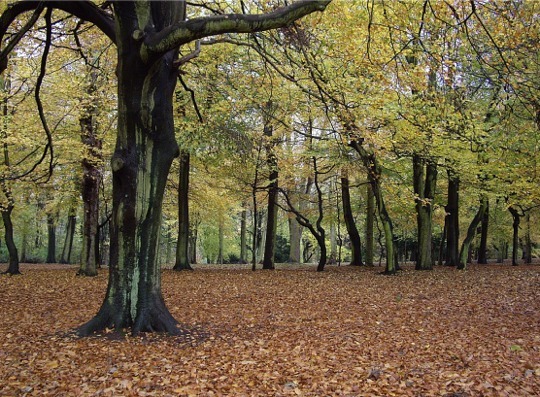
View On WordPress
0 notes
Text
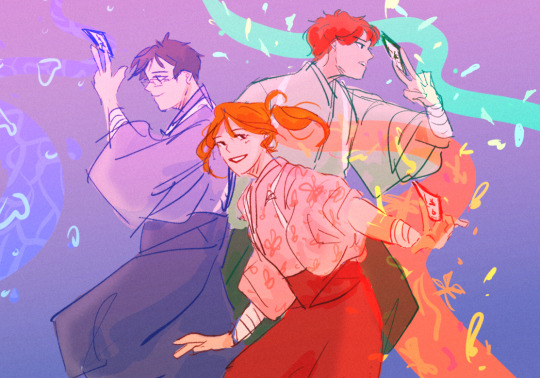
au where karuta are like magical powers
#just to be clear chihaya is wind/fire#arata is obviously water#and taichi is wood because of pine tree#so yeah magic is in the form of the incarnation of poems#and their assigned poems are like their main one#it's a fun au to think about#chihayafuru#ayase chihaya#wataya arata#mashima taichi#taichihayarata
464 notes
·
View notes
Text
ugh reading a book of poetry based on really liking a single poem and then the rest is just sort of mid navelgazing with extra space is really depressing for some reason
#also makes me think well. why am i beating myself with hammers all the time and refusing to send anything in. if this gets published#when i know exactly why this got published; did a supposedly relevant MA about it at a place where they formed the relevant connections#which would just be good planning if it led to good poetry!!! but half the time. bad.#of course this is entirely subjective. might be fairer to say i just often don't like the output produced by that kind of career path#i think this is maybe because well. what are you writing poetry about. you don't seem very interested in anything beyond your own emotions#vague ideas about 'nature' might have developed into original ideas if you had studied something related to nature instead#writing poetry about trees without knowing anything about trees usually just ends up as particularly boring poetry about people#not even good poems about people because the only people you seem to socialise with are in creative writing MA programs. oof.
9 notes
·
View notes
